The Hollywood Walk of Fame
Introduction
Text-to-speech Audio
In the early 1950s, E.M. Stuart came up with the idea of awarding stars in film, television, radio, recording, and later, live theatre. The Walk of Fame, consisting of the first 1,600 stars, was officially dedicated in the spring of 1961, and it was designated a Historic-Cultural Monument by the Cultural Heritage Board in 1978. The Walk of Fame runs along Hollywood Avenue from Gower Street to La Brea Avenue along with two other segments on Vine Street and Marshfield Way. The Walk of Fame ends with "The Four Ladies of Hollywood" gazebo, which celebrates the multi-ethnic women of Hollywood. The internationally known Hollywood Walk of Fame has become one of the most iconic emblems of the entertainment business.
Images
Stars on the Hollywood Walk of Fame
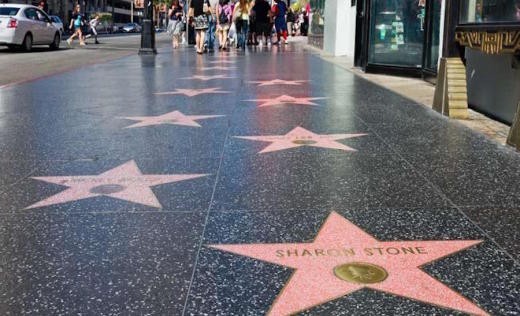
Vintage postcard showing the Walk of Fame and the famous Brown Derby restaurant near Hollywood and Vine
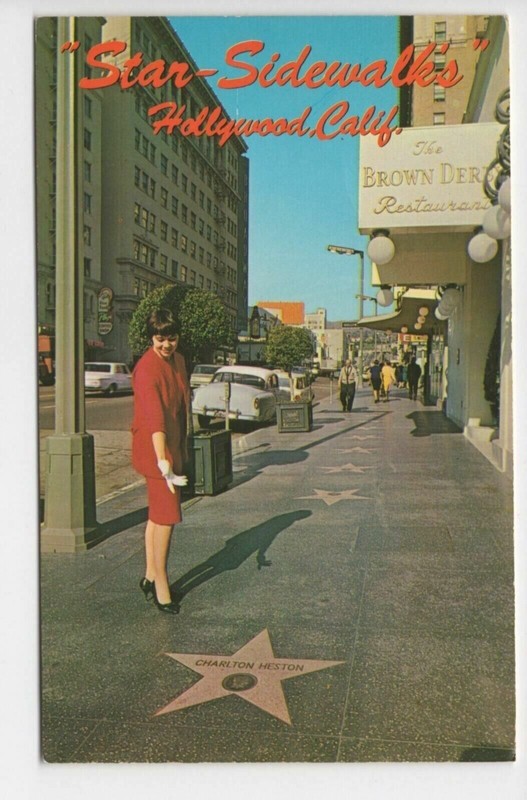
Ray Charles touching his newly unveiled star on the Hollywood Walk of Fame in 1981
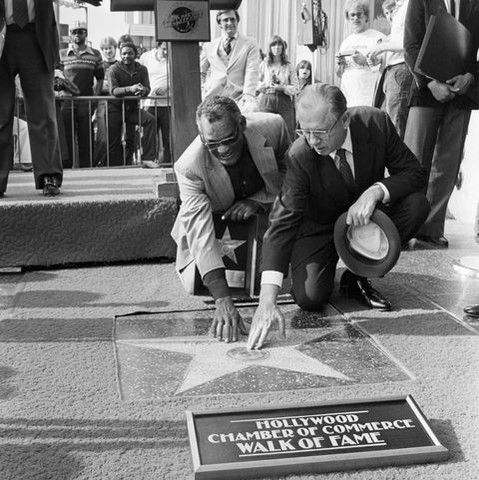
A block on the Walk of Fame explaining the history and the first stars to receive a star in 1958

Minnie Mouse receiving her star, placed next to Mickey Mouse's, on the Hollywood Walk of Fame
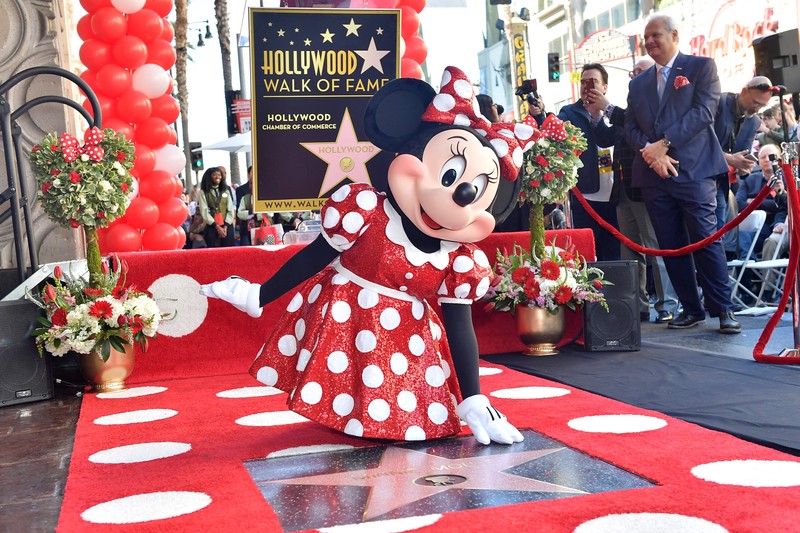
Johnny Grant pictured with several of The Munchkins from "The Wizard of Oz," who received a star in 2007
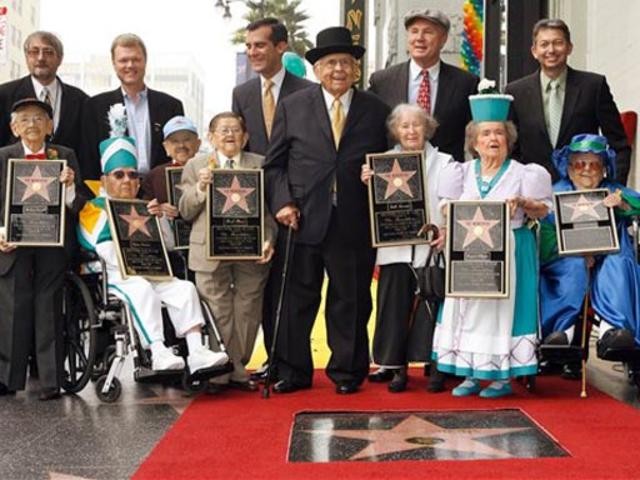
Backstory and Context
Text-to-speech Audio
In 1953, E.M. Stuart, the then volunteer president of the Hollywood Chamber of Commerce, came up with the idea for the Hollywood Walk of Fame. According to the Chamber’s press release, he wanted to “maintain the glory of a community whose name means glamour and excitement in the four corners of the world.” Architecturally, it is not known for certain how the idea was born. One likely theory is that it was created to emulate the ceiling in the dining room of the historic Hollywood Hotel, which once had stars painted on it with the names of celebrities.
The foundation for the Walk of Fame was not agreed upon until 1955. That same year, the Hollywood Chamber of Commerce proceeded to secure the necessary signatures to present to the city. These plans were solidified and submitted to the Los Angeles City Council in January 1956. The Chamber then enlisted the help of the Board of Public Works to prepare the engineering specifications. In 1956, a proposed version of the star was unveiled, including a caricature of the honoree, with a proposal for brown and blue stars. The idea was later nixed because of concerns that caricatures were too complicated. Additionally, the colors were changed to Black and coral.
The Improvement Association soon began the process of selecting the honorees to be initially placed on the Walk of Fame. To represent the different aspects of the entertainment industry, four major committees were formed, including: motion picture, television, recording, and radio. Walt Disney was one of the first selections of the Members of the Motion Picture Selection Committee. The process continued to evolve, and 150 names a week were submitted. Naturally, controversy ensued. For example, the legendary silent film actor, Charlie Chaplin, was not chosen to receive a star, though his name was included in the original nominations.
The Chamber and the City unveiled eight stars on Hollywood Boulevard in August 1958. This was to show what the Walk of Fame would look like and to see how the public responded. The eight honorees included: Olive Borden, Ronald Colman, Louise Fazenda, Preston Foster, Burt Lancaster, Edward Sedgwick, Ernest Torrence, and Joanne Woodward. Construction began shortly after; however, it was swiftly delayed due to opposition to the assessment district and Charlie Chaplin, Jr. avenging the fact that his father was left out.
When construction resumed on the Walk of Fame, Stanley Kramer’s star was the first laid on March 28, 1960. Work progressed so quickly that it was decided to make the dedication on November 23rd, at the time of the Hollywood Christmas Parade. E.M. Stuart was appointed chair of the Completion Committee and planned the ceremonies to celebrate the completion. The work wasn’t finished until spring 1961, when it was finally accepted by the Board of Public Works and included the first 1,558 stars.
The City Council soon saw the need to have a system that kept the Walk of Fame financially stable, and they asked the Hollywood Chamber of Commerce to create one. The Chamber of Commerce created tasks to establish rules that determined the qualifications of individuals eligible for a star, a rigid procedure to process the candidates, and have a financial plan for new additions. It was not until December 1968 that the next star was added due to these stern rules. Actor Danny Thomas hosted the ceremony, and from then on, ceremonies occurred frequently.
The Hollywood Walk of Fame was designated a Historic-Cultural Monument by the Cultural Heritage Board in 1978. Two years later, the Chamber presented a star to entertainer Johnny Grant, who went on to chair the Walk of Fame committee. Grant’s leadership skills made the Walk of Fame an international icon. Additionally, a fifth category was added: Live Theatre. Grant approved the creation of a second row of stars on the sidewalk which would alternate with the existing stars. In 1994, the Walk of Fame was extended one block to the west from Sycamore to La Brea and thirty stars were added to the block to create instant attraction.
The Walk of Fame ends with a gazebo called “The Four Ladies of Hollywood,” featuring four silver statues of screen actresses of different ethnicity: Anna May Wong, Dolores Del Rio, Dorothy Dandridge, and Mae West. The gazebo was created to honor multi-ethnic women of Hollywood. The Hollywood Walk of Fame has become one of the top tourist attractions in America and is revered as one of the most successful marketing ideas ever created.
Sources
"History of the Walk of Fame." Hollywood Walk of Fame. Accessed April 4, 2015. http://www.walkoffame.com/pages/history.
Ellenberger, Allan R. The Story of Chaplin’s Walk of Fame Star, Hollywoodland. November 20th, 2010. Accessed October 16th, 2022. http://allanellenberger.com/the-story-of-chaplins-walk-of-fame-star/.
Hollywood Goddess Gazebo, Roadside America. Accessed October 19th, 2022. https://www.roadsideamerica.com/story/24185.
California Beaches
eBay
Good Housekeeping
Travel in USA
The Walt Disney Company
CBS
